#Iot Control System
Explore tagged Tumblr posts
Text
#lighting automation#lighting control systems#smart home#smart house lighting#efficiency#light control#smart lighting#energy-efficient lighting#home automation#office lighting control#IoT lighting solutions#Ideeaz Automation
0 notes
Text
Powering the Production Line: Messung’s NX-ERA PLCs in Automotive Material Handling

In automotive manufacturing, precision isn’t a luxury, it’s a necessity. From chassis and engine assembly lines to the press shop and paint line, seamless material handling is critical to keeping production on track. Whether it’s coordinating conveyors, pick-and-place systems, or synchronizing with robotic cells, the need for intelligent control is constant.
Messung’s NX-ERA PLCs deliver this control with unmatched flexibility. With native support for Modbus TCP/IP, Ethernet/IP, EtherCAT, OPC-UA, and IO-Link, they enable high-speed communication across robots, HMIs, VFDs, servo amplifiers, and central SCADA systems. Plus, with remote I/O modules and protocols like CANopen, our PLCs handle large-scale, distributed inputs and outputs effortlessly. Simply put, NX-ERA makes advanced, synchronized automation easy, even in the most demanding environments.
What is Material Handling in the Automotive Industry?
Material handling in the automotive industry involves the movement, positioning, storage, safety, and tracking of components and assemblies throughout the production process—from the arrival of raw materials to the final stages of vehicle assembly. Efficiency here is critical; any delay or misstep can disrupt the entire manufacturing flow.
Key areas such as the chassis and engine assembly lines, along with the press shop and paint line, rely heavily on sophisticated material handling systems, including conveyors, pick-and-place machines, and robotics, to keep production moving seamlessly. These systems must operate in perfect sync, often across large, distributed areas with thousands of I/O points.

The Brain Behind the Brawn: NX-ERA PLCs
Our state-of-the-art NX-ERA PLCs including the NX-ERA Xpress and NX-ERA Jet, are compact PLCs designed for high-speed, reliable control. These programmable logic control systems are the heart of any automated material handling system. By offering real-time control, seamless connectivity, and robust communication protocols like Modbus TCP/IP, Ethernet/IP, EtherCAT, OPC-UA, and IO-Link. They interface effortlessly with robots, HMIs, VFDs, servo amplifiers, and centralized SCADA systems, ensuring reliability and scalability.
Here are some of its most impactful features:
High-Speed Processing Power
The core point of NX-ERA PLCs is that they are capable of real-time processing. These robot systems run as fast as your machinery, and the synchronization is important for the overall efficiency of the system. This compact PLC will guarantee flawless optimization for every aspect of the bottling line, be it controlling the work of conveyors or robotic manipulation.
Modular Design for Flexibility
The greatest feature of the NX-ERA PLC is its modular design. Production plants in the automotive industry often aim for some form of adaptability, and, thus, this feature is very helpful. It allows the installation to expand while the business is developing. The implementation of modularity means that the system can be integrated with any new equipment, production units, or additional features to ensure that there will be no disruption to the system performance.
Integrated I/O Modules for Streamlined Setup
Our smart and compact PLC integration contains integrated I/O modules that reduce installation and wiring times, thus also focusing on the fast-paced phenomenon in the automotive industry. For simplification of the things, input/output capabilities are now directly included in the integrated PLC system, which substantially reduces the external wiring as a result of which the setting up is speedier and less prone to mistakes.
Advanced Web Server Capabilities
It is safe to say that we are far off the days when engineers would have to be on site for them to physically track and diagnose issues on the factory floor. The capability of the built-in web pages of our NX-ERA PLC allows easy remote access for getting the actual real-time state of the diagnostics and monitoring. This feature is incredibly important in an industry that operates around the clock, as it allows maintenance teams to resolve issues remotely, reducing downtime and keeping things running smoothly.
The Role of the NX-ERA PLCs in Material Handling
In the automotive industry, material handling is integral to the success of the production process. From raw materials to semi-finished goods, and finally to finished products, materials need to be handled with precision. Automation is key to achieving this, and Messung’s NX-ERA PLCs are designed to make this process as efficient and effective as possible.
Here is how it is done:
Conveyor Systems Optimization
Conveyor systems, which carry parts between the workstations and at the same time keep the production continuously running, are the most popular form of material handling in the automotive plants. NX-ERA PLCs make sure that the system, no matter what, functions without any breaks by adjusting the speed of the conveyors to fit the pace of production. The real-time processing feature ensures that the system in question becomes flexible almost immediately, providing the assembly line without any interruptions and preventing the end line packing in the last round.

Predictive Maintenance to Maximize Uptime
The predictive maintenance of the system is seen as the golden nugget to maximize uptime. For the maintenance of a plant, having machines down during their run time is quite expensive. In the automotive industry, where the production rates run on a very tight schedule, even a moment's disruption would mean substantial losses. Our PLC Systems use a predictive maintenance system to keep a continuous check on the condition of the equipment. The control system will be equipped with predictive maintenance, which can track the system performance, increasing the change in predicting when maintenance is needed before failure occurs. These stains would reduce chances of equipment going down and also increase whole equipment machines productivity performance.
Power Management for Material Handling Equipment

How NX-ERA PLCs Integrate with SCADA Systems
Industrial automation relies not just on PLCs but also on supervisory control and data acquisition (SCADA) systems to monitor and control large-scale operations. The integration of NX-ERA PLCs with SCADA applications enhances material handling capabilities by providing plant operators with real-time insights into the performance of material handling equipment.
Real-Time Visualization and Data Monitoring
Data gathered from the cluster of service line sensors are then monitored by SCADA systems through real-time visualization and data troubling. By means of the material handling systems' connecting to the SCADA applications, operators are able to visualize every operation stage on a single interface. Our NX-ERA PLC assists the SCADA system in a way that allows real-time data visualization. As for plant automation, this integration enables the operators to redesign the production line and fabricate the survey that they are in full command, including the conveyor speed, robotic movement, and electrical power consumption.
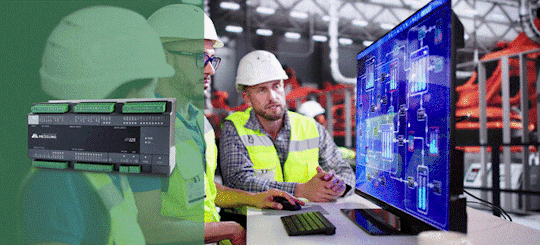
Alarming and Fault Diagnostics
Unexpected malfunctions are a part of any complex system, but SCADA and PLC integration ensures they are dealt with swiftly. The NX-ERA PLC can send alerts to SCADA systems when material handling equipment encounters an issue, whether it’s a malfunction in a conveyor belt, a sensor failure in a robotic arm, or an electrical fault. This proactive approach helps resolve issues before they lead to extended downtime.
Historical data analysis for continuous improvement
Other benefits of integrating the SCADA system with the NX-ERA PLC is to have an ability to analyse historical data. These past data performances can better help the plant managers to see trends, adjust production schedules, and improve the efficiency of the material-handling systems over the long period. In actuality, the PLC saves and disposes of necessary data. This information, then, is fed into the SCADA system and used for analysis and presentation purposes.
The Future of Material Handling with NX-ERA PLCs
As the automotive industry embraces Industry 4.0, NX-ERA PLCs are positioned at the forefront of the shift towards smarter, more connected manufacturing systems. This is brought about by switching to smarter, more connected production systems. Thanks to NX-ERA PLCs, which are able to integrate with SCADA applications, robots, and power supplies, you can now easily build a factory that can quickly adapt to changes in the current demand and the production process.
Benefits Include:
More automation and efficiency with the increasing factories
As factories become more automated, the role of PLCs like the NX-ERA will only grow. The future of material handling will rely on even more precise and automated systems, from fully autonomous robots to smart conveyors that adjust their speed and behavior based on real-time conditions. The NX-ERA PLC is ready to support this evolution with its high-speed processing and robust integration capabilities.
Energy Management and Sustainability
Green manufacturing is a critical concern for the industry today. Automotive manufacturers demand advanced NX-ERA PLCs in a bid to bring down the environmental impact of the production. An essential element that plays a pivotal role in power solutions, predictive maintenance, and derived data for operational efficiency is a way for these to reduce the consumption of energy.
Real-Time Data and IoT Connectivity
With the rise of the Internet of Things (IoT) in manufacturing, NX-ERA PLCs will continue to integrate with a broader network of connected devices. This real-time data flow will empower automotive plants to make more informed decisions and improve their material handling systems.
Conclusion: The Future of Material Handling in the Automotive Industry

In the race for efficiency and innovation, Messung’s NX-ERA PLCs are the pit crew that keeps material handling equipment running at peak performance. Their combination of advanced features, modular design, and seamless integration with SCADA systems positions them as the ideal solution for automotive manufacturers aiming to stay ahead of the competition.
As automotive plants move towards smarter, more automated manufacturing processes, the need for reliable, high-performing PLCs like the NX-ERA will only continue to grow. By embracing the capabilities of Messung’s NX-ERA PLCs, automotive manufacturers can ensure that their material handling systems operate efficiently, sustainably, and with minimal downtime, ultimately contributing to the ongoing success of the industry.
In this fast-paced industry where precision is the name of the game, Messung’s NX-ERA PLCs are the game changers that automotive manufacturers need to optimize their material handling systems and maintain a competitive edge in the global market.
#chassis and engine assembly lines#Modbus TCP/IP#Ethernet/IP#EtherCAT#OPC-UA#remote I/O modules#CANopen#compact PLCs#programmable logic control systems#SCADA systems#automotive industry#PLC system#material handling#PLC Systems#material handling systems#SCADA applications#PLC integration#Automotive manufacturers#Internet of Things (IoT)
0 notes
Text
#SIM Management Systems#SIM Management Systems in IoT#IoT connectivity#IoT success#Legacy IoT#IoT Cellular connections#SIM control
0 notes
Text
The comprehensive guide to the Internet of Things and remote control
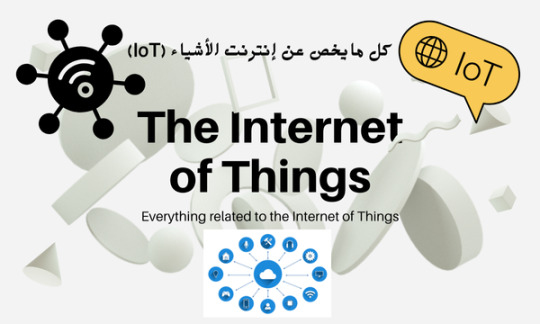
The Comprehensive Guide to the Internet of Things and Remote Control
Table of Contents Chapter 1: Introduction to the Internet of Things (IoT) Definition of the Internet of Things. The evolution of the concept of the Internet of Things. How does the Internet of Things work? IoT applications in daily life. Chapter 2: Components of the Internet of Things Smart devices (sensors, actuators, and controllers). Communication and networking in the Internet of Things (Wi-Fi, Bluetooth, LoRa, 5G). Software and cloud platforms (artificial intelligence and data analysis). Protocols used in the Internet of Things (MQTT, CoAP). Chapter 3: Communication technologies in the Internet of Things Overview of communication technologies. The difference between local and wide area networks (LAN vs WAN). Low-power communication networks (LPWAN). Challenges of communication and reliability in the Internet of Things. Chapter 4: Smart home automation using the Internet of Things Definition of the smart home. Smart home appliances (smart lights, smart locks, thermostats). Virtual assistant systems (such as Alexa and Google Assistant). Smart home security and monitoring solutions. Chapter 5: Internet of Things in industrial sectors Smart manufacturing (predictive maintenance, smart robots). Smart agriculture (agricultural sensors, smart irrigation systems). Smart cities (traffic management, smart ecosystems). Smart healthcare (remote monitoring, wearable devices). Chapter 6: Security and privacy in the Internet of Things Potential security risks in the Internet of Things. Privacy and data protection challenges. Security protocols and technologies (encryption, identity management). How to address security threats in smart systems. Chapter 7: Artificial intelligence and the Internet of Things How does artificial intelligence complement the Internet of Things? Predictive analysis and intelligent decision making. Machine learning applications in the Internet of Things. Examples of artificial intelligence in smart systems. Chapter 8: The future of the Internet of Things Future market developments and trends. 5G Internet of Things and its role in supporting developments. Future challenges and new opportunities. How will the Internet of Things change our daily lives? Chapter 9: Examples and Case Studies Practical examples of the use of IoT in various fields. Case studies of the most popular IoT applications (eg: Nest, Tesla, Philips Hue). Utilizing the Internet of Things to improve efficiency and productivity. Chapter 10: How to get started with the Internet of Things? Available tools and platforms for developing IoT solutions (Raspberry Pi, Arduino). Building simple projects using the Internet of Things.
#Internet of Things (IoT) guide - دليل إنترنت الأشياء#Smart home automation - أتمتة المنازل الذكية#IoT for remote control - إنترنت الأشياء للتحكم عن بعد#Connected devices - الأجهزة المتصلة#IoT applications - تطبيقات إنترنت الأشياء#Smart home technology - تقنية المنازل الذكية#Home automation solutions - حلول أتمتة المنازل#Remote monitoring - المراقبة عن بعد#IoT security - أمان إنترنت الأشياء#IoT and smart devices - إنترنت الأشياء والأجهزة الذكية#Future of IoT - مستقبل إنترنت الأشياء#Smart home gadgets - أدوات المنزل الذكي#Wireless control systems - أنظمة التحكم اللاسلكي#IoT for energy efficiency - إنترنت الأشياء لكفاءة الطاقة#IoT in everyday life - إنترنت الأشياء في الحياة اليومية
0 notes
Text
What Is the Best Approach to Setting Up a Smart Garage?
As homes become more interconnected and smart devices permeate every corner of daily life, the garage is often overlooked. However, integrating smart technology into your garage can significantly enhance convenience, security, and efficiency. So, what is the best approach to setting up a smart garage? Whether you’re looking to streamline your morning routine or boost the security of your home, a…
#AI garage#app control#automated garage#automated security#cloud technology#connected garage#digital garage#garage automation#garage cameras#garage efficiency#garage innovation#garage monitoring#garage organisation#garage safety#garage sensors#garage setup#garage tech#garage tech trends#garage tools#geofencing#home automation#home security#home upgrade#integrated systems#IoT garage#modern garage#remote access#RFID systems#security systems#smart cameras
0 notes
Text
Smart Pump Controller for Water Tank Automation SWYAM® Smart Pump Controller is a fully automatic, Made-in-India device that simplifies pump management. Compatible with all single-phase motors up to 2HP, it offers features like auto and manual operation, magnetic float sensors, lightning-fast response, low power consumption, and easy installation. Enjoy hassle-free pump control and save on energy costs with the SWYAM Smart Pump Controller System.
#Pump Controller#smart pump control system#smart pump controller#smart water pump controller#mobicore#mobicore infotech#home automation products#homeautomation#iotservicesinnagpur#iot solutions in india#iot applications
0 notes
Text
"The Crucial Role of Industrial Control Integrators: Driving Efficiency and Innovation in Modern Industry"
The Essential Role of an Industrial Control Integrator in Modern Industry
In today’s fast-paced industrial environment, the expertise of an Industrial Control Integrator has become indispensable. These professionals or companies specialize in designing, implementing, and maintaining complex control systems that are critical for optimizing industrial processes. This blog delves into the pivotal role of an Industrial Control Integrator, explaining their key responsibilities and the impact they have on industrial efficiency.
What is an Industrial Control Integrator?
An Industrial Control Integrator is a specialized expert or firm responsible for creating and managing control systems that automate and regulate industrial machinery and processes. These control systems encompass both hardware and software components, which work together to enhance performance, increase reliability, and streamline operations.
Core Responsibilities of an Industrial Control Integrator
Control System Design and Engineering:
Needs Analysis: The integrator begins with a comprehensive assessment of the client’s specific requirements. This involves understanding their industrial processes and defining the desired outcomes.
Custom System Design: Based on the assessment, the integrator designs a bespoke control system, selecting the appropriate sensors, controllers, and communication protocols to meet the client’s needs.
Integration and Installation:
Hardware Setup: The integrator manages the installation of essential components such as Programmable Logic Controllers (PLCs), Human-Machine Interfaces (HMIs), and other field instruments.
Software Configuration: They also configure the software that governs the control system, ensuring seamless communication between hardware and other operational systems.
Testing and Commissioning:
System Testing: Before full deployment, the integrator conducts rigorous testing to identify and rectify any issues, simulating real-world conditions to verify system performance.
Commissioning: Once testing is complete, the integrator supervises the final commissioning process, making any necessary adjustments to ensure optimal functionality.
Training and Ongoing Support:
Staff Training: Integrators provide training for the client’s personnel, equipping them with the knowledge to operate and maintain the new system effectively.
Continued Support: They offer ongoing maintenance and support services to resolve any issues and ensure the system continues to operate smoothly.
Why Industrial Control Integrators are Vital
Boosting Efficiency:
Industrial Control Integrators streamline processes by automating operations, which reduces manual input and enhances precision. This leads to improved productivity and reduced operational costs.
Enhancing Safety:
Integrators implement advanced control systems that monitor conditions in real time, increasing workplace safety by triggering alarms or shutdowns when necessary.
Ensuring Reliability:
By designing systems with redundancy and fail-safes, integrators help minimize downtime, which is crucial for meeting production targets and maintaining product quality.
Facilitating Scalability:
As businesses expand, their control systems must adapt. Integrators create flexible solutions that can be easily scaled or upgraded to meet growing demands.
Incorporating Emerging Technologies:
With the rise of Industry 4.0, integrating new technologies such as the Internet of Things (IoT), advanced analytics, and Artificial Intelligence (AI) is becoming increasingly important. Control integrators are key to incorporating these innovations into existing systems.
The Future of Industrial Control Integration
The field of industrial control integration is continuously evolving, driven by technological advancements and shifting industry needs. Future trends include:
AI and Machine Learning Integration: Enhancing predictive maintenance and process optimization.
IoT Integration: Enabling more detailed data collection and real-time analytics.
Enhanced Cybersecurity: Addressing the increasing need for robust security measures to protect industrial control systems from cyber threats.
Conclusion
Industrial Control Integrators are essential in ensuring the efficiency, reliability, and safety of modern industrial processes. Their expertise in designing, implementing, and maintaining control systems is crucial for optimizing operations and keeping pace with technological advancements. For businesses looking to upgrade or implement control systems, partnering with a skilled Industrial Control Integrator can be the key to achieving greater efficiency and performance.
#Industrial Control Integrator#Industrial Automation#Control Systems Engineering#Programmable Logic Controllers (PLCs)#Human-Machine Interfaces (HMIs)#Industrial Process Optimization#Automation Solutions#System Integration#Industrial Efficiency#Operational Reliability#Advanced Control Systems#Industry 4.0#Internet of Things (IoT)#Artificial Intelligence (AI) in Industry#Predictive Maintenance#Industrial Cybersecurity#Control System Design#Industrial Technology Trends#Engineering and Integration Services#Manufacturing Automation
0 notes
Text
youtube
NXP: MCX A Series Launch Video
https://www.futureelectronics.com/resources/featured-products/nxp-mcx-n-mcx-a-microcontrollers . MCX A Series all-purpose microcontrollers (MCUs) address a wide range of applications with scalable device options, low power and intelligent peripherals. Designed to allow engineers to do more, the new MCX A series is optimized with the essential features, innovative power architecture and software compatibility required by many embedded applications. https://youtu.be/fjNG2t4TBXQ
#nxp#MCX#MCX A#all-purpose microcontrollers#MCU#MCX A series#microchip#small-footprint MCU#software compatibility#embedded applications#industrial sensors#motor control#power system#controllers#IoT devices#Youtube
0 notes
Text

Spintly's cloud-based system lays the groundwork for top-notch security in your smart environment. Some notable users include Industry leaders like JLL India, Procter & Gamble, Prestige Group, Godrej Group. Connect with Spintly regarding your project today !!
#access control solutions#access control system#smartbuilding#iot#iotsolutions#rfid technology#bluetooth#wireless#visitor management system#qr code#biometrics#tenantmanagement
0 notes
Text
#Smart home technology#Connected living#Home automation#IoT devices#Energy-efficient homes#Home security systems#Convenience of device integration#Future of living#Home maintenance automation#Voice-controlled assistants
0 notes
Text
#Intelligent Light Management#Smart Lighting System#Energy-Efficient Lighting#Sustainable Lighting Solutions#Eco-Friendly Lighting Technology#IoT-Based Lighting Control#Lighting Automation#Green Building Solutions#Smart Energy Management#Energy Saving Lighting Solutions#lighting control systems#smart home#smart house lighting
0 notes
Text
#pressure sensor#sensors#instrumentation#measurement#engineering#technology#physics#electronics#industrial automation#process control#manufacturing#automation#IoT#smart devices#smart homes#smart cities#data analytics#data science#machine learning#artificial intelligence#automation technology#industrial automation systems#process automation#manufacturing automation#sensor technology#pressure measurement#sensor types#pressure sensor types#diaphragm pressure sensor#strain gauge pressure sensor
0 notes
Text
What is IoT RTU and Sensors?

What is RTU?
RTU is a remote monitoring and control device whose task is to communicate with various sensors and actuators to monitor and control remote equipment in real time. An RTU typically includes a processor, communication modules, storage devices, and various interfaces that enable it to be connected to different types of sensors and actuators.
What is Sensor?
A sensor is a device that converts physical or chemical quantities in the environment into electrical signals. Depending on their type, sensors can measure parameters such as temperature, humidity, pressure, flow, and more. Sensors play a key role in IoT collection, providing necessary information to RTU by collecting real-time data.
How do RTUs and sensors collaborate?
1. Data collection and transmission
The collaboration between RTU and sensors begins with data collection and transmission. By connecting to the sensor, the RTU obtains various data measured by the sensor in real time. These data can be environmental parameters such as temperature, humidity, and pressure, or key information on equipment status and production processes. The RTU transmits these data to the central control system or cloud platform through the built-in communication module to achieve remote monitoring and control.
2. Data processing and analysis
RTU is not only responsible for data transmission, but also has certain data processing and analysis capabilities. It can process data collected by sensors in real time, extract useful information, and make judgments and controls based on preset rules. This collaboration enables industrial systems to respond more intelligently to environmental changes and production needs.
In Conclusion
The close relationship between RTU and sensor plays a vital role in monitoring. Through effective data collection, transmission and processing, they jointly build an intelligent monitoring system, improve efficiency, reduce costs, and lay the foundation for the future development of the smart Internet of Things. As technology continues to develop, we can expect that the role of RTUs and sensors in monitoring will continue to expand and deepen.
More application scenarios
Agricultural monitoring, environmental monitoring, meteorological monitoring, greenhouse environment monitoring, temperature and humidity monitoring, energy monitoring, water quality monitoring, sewage treatment plant monitoring, oil field equipment monitoring, liquid storage tank level monitoring, water level monitoring and flood warning, energy consumption monitoring, street lights Monitoring, air quality monitoring, irrigation system control, water pump control and more
More information: https://www.bliiot.com/
0 notes
Video
youtube
IOT Based Agriculture Monitoring and Controlling System using Arduino Unohttps://www.youtube.com/watch?v=t607LVFfZ4I
#youtube#IOT Based Agriculture Monitoring and Controlling System using Arduino Uno https://www.youtube.com/watch?v=t607LVFfZ4I
0 notes
Text
Smart Traffic Control System with IoT: Everything You Need to Know
Rapid urbanisation presents a major challenge that affects those who are responsible for urban infrastructure, public security, and comfort. As the number of cars grows and the traffic gets more overcrowded, major traffic accident incidents become more common. IoT, or the Internet of Things in Transportation, creates a strong foundation that allows you to leverage IoT for better passenger…
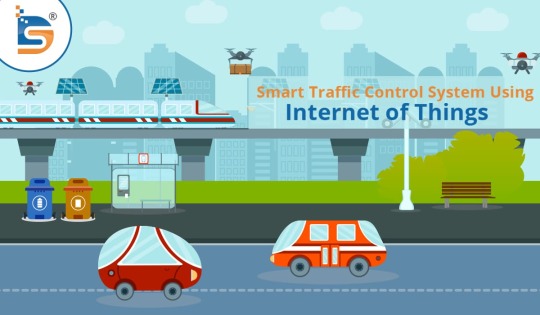
View On WordPress
#IoT#IoT app#IoT app development#IT company#sdreatech#Smart Traffic Control System with IoT Everything You Need to Know#Website Development
0 notes
Text
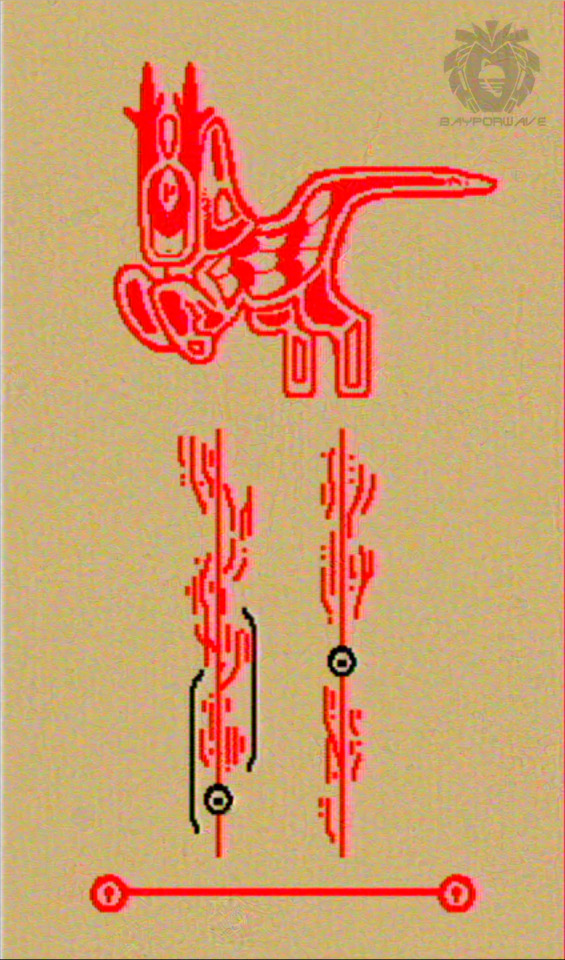
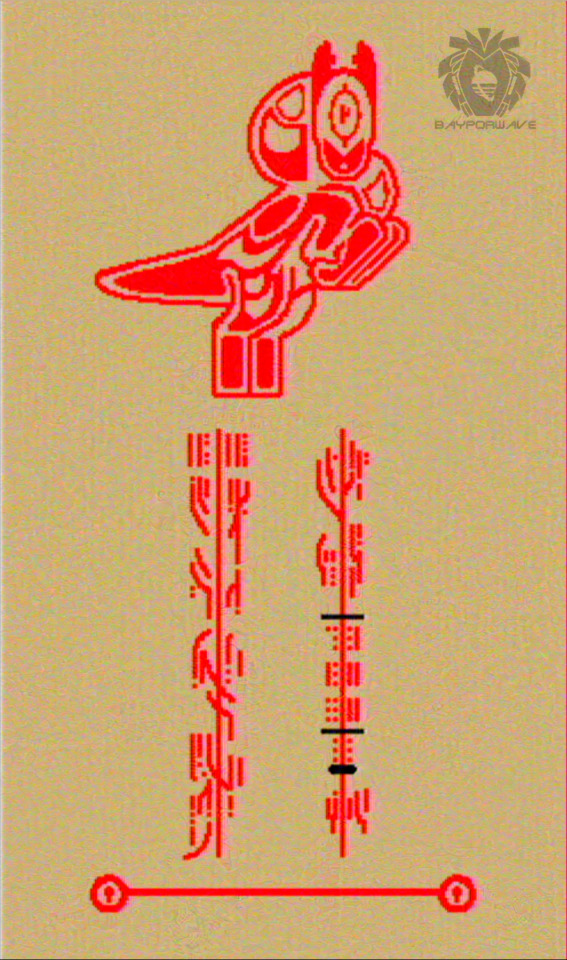
Before the students left Rek, the rakii had been in the process of developing their own AI. At first they were gifted such intelligence by the students, providing washed-down copies of themselves to add to their tech and craft management. But when the need for more personalized AI and general curiosity arose, they went to work, using the student provided AI as a base or reference point. From there, three types of AI sprouted off these projects: • Student AI - Highly valuable, practical holy relics of what remains of the students. These are "purest" AI and are strictly held within Iot's control, only able to function off student tech. There are only 4 existing and 2 remain within the Idle Library. These AI are again, much more watered-down and while are fairly sentient they aren't 100% sapient.
• Hybrid or Steward AI - A mix between student and rakii coding. Since rakii couldn't exactly copy paste the student AI's themselves, what was given, they managed add on it. These AI were specialized and trained to understand the workings of rakii history, and language, while also being able to work on both student and rakii devices. They are still held under Iot control but with special permission, they can be granted to important government official or funded servers. These AI are a tad more self-aware, understanding their purpose and history just fine.
• Factotum AI - Completely rakii made and trained AI. With little to no student involvement, these AI are either standard algorithmic run assistants or commercially used for things like personal computers, phones, self-driven vehicles (mainly rail cars and public transit) or vending machines. Not ALL devices have AI of course, as the general public have a lot of mixed feelings towards, not such distain but prefer to be the only one in control of their tools. On the upside, they are heavily regulated and lack any possibility for self-awareness or sapience. The ones displayed here are two steward AI named Wyrr'Yoii (left) and Booror (right). Wyrr'Yoii is currently housed on the lunar settlement, Wubu maintaining life support and security, taking the avatar of a temperate. They were handed over to the rakii aerospace committee by Iot, which is heavily funded by the city for the investment of seeking out their missing gods. Wyrr'Yoii is described to be standardly monotone and critical, yet easy-going and understanding. They know exactly where their functionally lies and are always willing to lookout for the inhabitants within them. They have long-range communication with ground control, and furthest orbiting station in their system, "The Needle of Shwati" (A Wubu settler checking in with Wyrr'Yoii)

Booror, is housed within an arctic government building in the Shto Dominion hence taking an arctic avatar. Having accepted trading offers and territory with Iot, they were later granted a steward to keep purpose tabs and documents on community. Ensuring those higher up are up-to-date with any possible trading changes. Though the general public are often wary of this development as recently there has been a project in the works of providing AI with RC units, wanting to see how these AI can interact with the physical world. One unit being an elaborate success, however the reactions of many were generally, "It looks creepy." and it became more of an underground project. (Cartographer Wa'chaa "Quiibii" Iot, speaking with Saiba in their RC unit)

#rakii#sci fi#alien#aliens#spec evo#possibly the longest info dump I've ever made woo#my bf had come up with some interesting ideas for rakii display tech too#stay tuned
82 notes
·
View notes